CityTouring

City trip to Valencia
SpainValencia, Spain's third-largest city, is an enticing blend of old-world charm and modern innovation. Nestled along the Mediterranean coast, it offers a mix of golden beaches, historical landmarks, and a thriving cultural scene. The city is renowned for its futuristic City of Arts and Sciences, an architectural masterpiece housing a science museum, planetarium, aquarium, and more. History enthusiasts will appreciate the well-preserved Gothic architecture, such as the 15th-century Silk Exchange and the impressive Valencia Cathedral, home to what is claimed to be the Holy Grail.
Food lovers thrill at the birthplace of paella, with countless vibrant markets and authentic restaurants to explore. The city's lively festivals, notably Las Fallas, with its explosive fireworks and parades, provide a truly local flavor and unforgettable spectacle of fire and lights. Lush gardens, parks, and a vibrant nightlife further round out Valencia's diverse offerings.
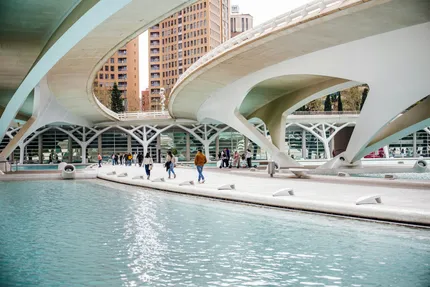
City of Arts and Sciences
An architectural complex featuring futuristic structures housing a science museum, planetarium, aquarium, and more. It's a cultural and architectural icon, showcasing cutting-edge design and innovative exhibitions. A must-visit for those intrigued by science, art, and modern architecture.
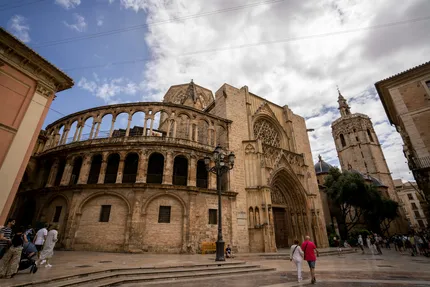
Valencia Cathedral and El Micalet
A magnificent Gothic cathedral with elements from Romanesque, Baroque, and Renaissance. It boasts a tower, El Micalet, offering stunning views. Inside, visit the Holy Grail Chapel and explore its rich history and beautiful artworks. Experience history and the city's religious heritage here.
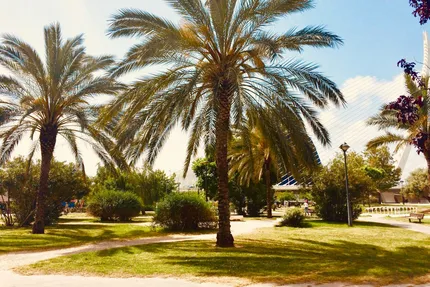
Turia Gardens
Once a riverbed, this expansive park is now a green oasis winding through Valencia. Perfect for walks, cycling, and leisure. It features playgrounds, sports facilities, and serene gardens. Turia Gardens offers an escape from the city's bustle and connects many major attractions.
Valencia is an ideal destination for culture enthusiasts keen on exploring history and modern architecture alike. Families will also enjoy its kid-friendly attractions like the Bioparc Valencia and the Oceanografic, the largest aquarium in Europe. Foodies will find a culinary haven in Valencia's markets and paella restaurants. Travelers looking to combine beach lounging with urban exploration will appreciate the balance of relaxation and activity the city provides.
For festival lovers, the city’s vibrant festivals, particularly Las Fallas in March, offer an electrifying cultural experience. With its myriad of museums, beaches, nightlife, and cultural activities, Valencia suits solo travelers, couples, and even groups looking for diversity in their experiences.
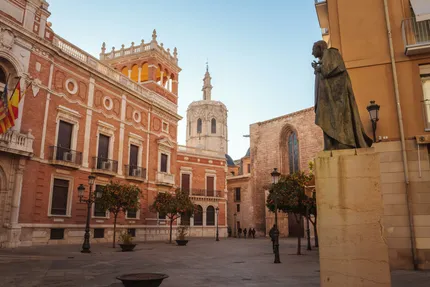
Best time to visit Valencia
The best time to visit Valencia is during the spring or fall months, particularly from March to May or September to November, when the weather is mild and pleasant, avoiding the stifling summer heat and tourist crowds.
More activities and things to see in Valencia:
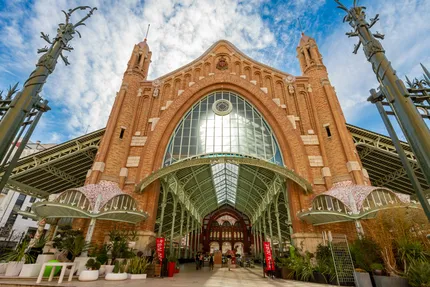
Central Market
A bustling market located in a beautiful modernist building. Here, you'll find fresh produce, meats, seafood, and local specialties. It's an ideal spot to experience Valencia's culinary scene, interact with locals, and enjoy a vibrant atmosphere.

Albufera Natural Park
Located south of the city, this natural park features a large freshwater lagoon and rice fields. It's a haven for birdwatching and offers boat tours to explore the serene landscapes. The park is also famous for being the birthplace of the traditional paella.

Ruzafa District
A vibrant and trendy neighborhood known for its lively nightlife, exciting dining options, and artsy vibe. The area hosts galleries, independent shops, and cultural events, making it a hub for creatives and a great place to experience Valencia's contemporary urban culture.
Bioparc Valencia
A unique and immersive zoo that highlights African ecosystems. It offers close encounters with animals in naturalistic settings. Visitors can learn about wildlife conservation while enjoying a well-designed space that prioritizes the animals' wellbeing.
Museo de Bellas Artes
One of Spain's most significant art galleries, housing works from the Gothic period to the 19th century. It features masterpieces by Spanish artists such as Velázquez and Goya. Art lovers appreciate its vast collection and the beautiful setting of the historic building.
La Lonja de la Seda
A UNESCO World Heritage Site, La Lonja de la Seda is a stunning Gothic building. Once a silk exchange, it exemplifies Valencia's prosperous history in trade. Its intricate architecture and impressive hall make it a fascinating historical site to explore.
Getting around in Valencia
Valencia is a highly walkable city with many of its attractions located close to each other. The city boasts a robust public transport system with buses, trams, and a metro that connect various parts of the city efficiently. Biking is also a popular option thanks to the city's flat terrain and well-marked bike lanes. The Valenbisi bike-sharing program offers an easy and affordable way to rent bikes. While the historical center is best explored on foot, exploring other areas like the City of Arts and Sciences may require public transport. For trips to nearby beaches or the Albufera Natural Park, renting a car might be convenient, although public transport options are available.
Getting to Valencia
To reach Valencia by air, you can fly into Valencia Airport (VLC), located about 8 km west of the city center, which offers numerous flights from European cities and some intercontinental destinations. For train travel, the high-speed AVE train can take you from Madrid to Valencia in approximately 1.5 hours and from Barcelona in around 3 hours, making it ideal for intercity travel within Spain. Long-distance buses connect Valencia to other Spanish and European cities, with the main bus station located close to the city center. Companies like ALSA offer services to various destinations, providing an economical travel option.